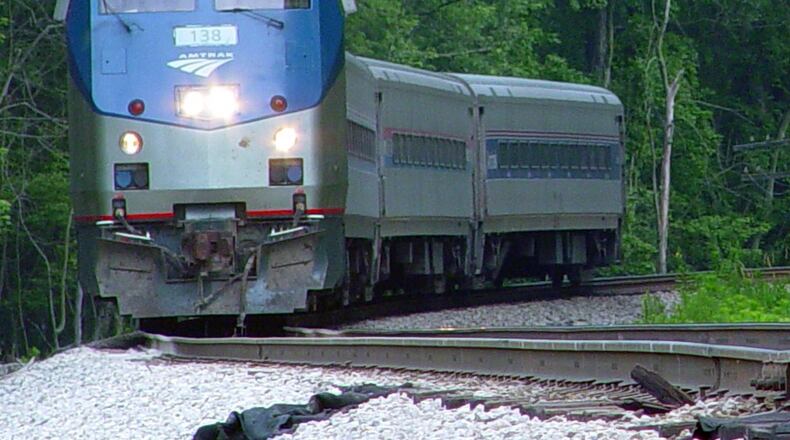Amtrak’s Cardinal Line, which travels from New York to Chicago, goes through Oxford three times a week at 3 a.m. but does not stop there. Earlier this month, Amtrak notified the city that it had received ridership numbers from an internal analysis, and the numbers were strong enough for Amtrack to tell the city and Miami University to move forward with the project, said G. Alan Kyger, the city’s economic development director.
The city has identified about five or six potential sites for the stop, but officials declined to divulge the specific locations as conversations with property owners have not yet taken place.
“The eventual decision-makers are going to be City Council and Miami University. We’re trying to work together on this project. So they (Amtrak) have asked us to start working on this,” Kyger said.
City officials weren’t expecting that.
“It kind of caught us a little off guard, because we were trying to create our story to present to Amtrak,” Kyger said, adding it turned out Amtrak was already asking for the next step.
Marc Magliari, a spokesman for Amtrak, did not have precise numbers from the study, but said it may make “business sense” for the line to stop in Oxford.
“Stopping the train costs money, and it can add time to the schedule. If the costs to stop and start the train can be overcome by any businesses that we’ll pick up, we move on to the next step,” he said.
Amtrak wants to know, "Where are you going to put it, and who's going to pay for it?" Kyger said. Costs for the station must come from city coffers, so for now, the city is looking at the least expensive kind of station, called a "shelter station," which has overhead canopies but no amenities such as restrooms. Earlier this year, Oxford officials said they would consider pursuing a federal grant to fund the station's operation.
According to Amtrak documentation, a shelter station serves smaller communities and sees fewer than 20,000 riders annually. However, if the proposed stop turns out to be successful, the city might consider upgrading. The next highest grade of station is a caretaker station, which does offer a covered building and restrooms.
Kyger said that it is possible that an Amtrak train could block an intersection while it’s stopped at the station, but the delay would be less time than it takes for a moving freight train to cross, because Amtrak passenger trains are much shorter than freight trains.
It is not yet known how much the shelter station might cost, Kyger said.
None of this means that the station is definitely happening, but for now, Amtrak has requested from Oxford an exhibit showing the station site, property ownership information, whether there will be other uses of the facility besides Amtrak passengers, and what funding has been obtained, officials said.
Oxford has established a committee, including city and university employees, as well as an Oxford resident who is an Amtrak retiree. Kyger hopes to have that committee return recommendations on the station to the university and the city by the end of this summer.
Randi Thomas, the director of institutional relations at Miami University, is part of the committee, which also includes Miami students, he said.
“Once we know the parameters and the location, we’ll identify funding sources. We’re still in the fledgling stage on this, but we don’t think we’ll be there long,” said Thomas.
Once all the plans are specified, Amtrak has to work with CSX, which owns that railroad line, to ensure that Amtrak’s new schedules would not interfere with freight operations, Magliari said.
About the Author
